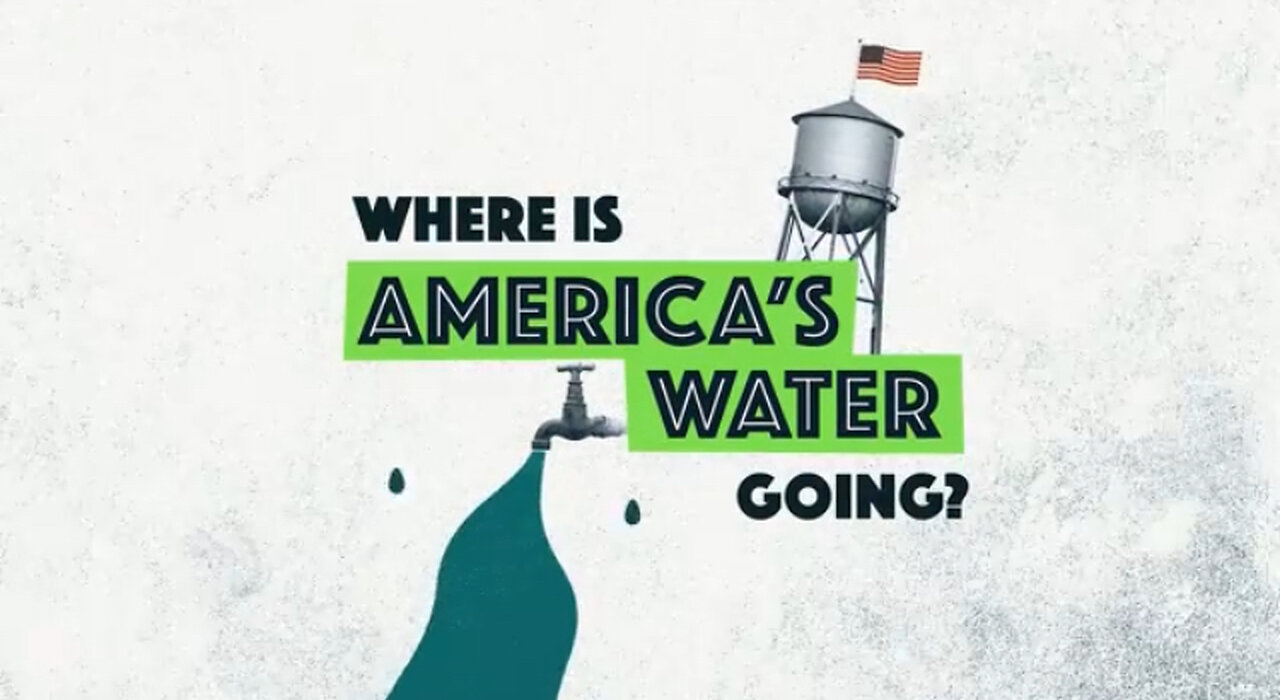Premium Only Content

Who's Taking America's Water?
California, a state often romanticized for its sunshine and celebrity, is facing a critical water shortage that threatens its way of life. The once-mighty Los Angeles River, a symbol of the state's cinematic allure, now stands as a stark reminder of environmental neglect. This iconic waterway, once teeming with life, is now a polluted scar on the urban landscape, mirroring the state's deeper ecological challenges.
At the heart of California's water crisis lies unsustainable consumption. Agriculture, a cornerstone of the state's economy, is a major culprit. While essential for feeding the nation, the cultivation of water-intensive crops like alfalfa, often destined for cattle feed, has placed immense strain on the state's water resources. This disproportionate allocation of water to agriculture, coupled with the urban sprawl characterized by expansive lawns and swimming pools, has exacerbated the problem.
The Colorado River, a vital lifeline for millions, is drying up at an alarming rate. Overconsumption and the impacts of climate change have pushed this once-mighty river to the brink. Antiquated water rights laws, which prioritize historical users, further compound the crisis. As the West grapples with a future of increasing aridity, drastic changes are imperative.
Diversifying crops, adopting advanced irrigation technologies, and investing in water conservation infrastructure are essential steps toward a sustainable water future. However, a fundamental overhaul of water allocation laws is equally crucial. California, and indeed the entire American West, stands at a crossroads.
The decisions made today will have far-reaching consequences for generations to come. It is imperative that policymakers, farmers, and urban residents work collaboratively to find equitable and sustainable solutions to this pressing challenge.
Directed by: Matt Nelsen
-
 LIVE
LIVE
Redacted News
1 hour agoHIGH ALERT! IRAN SAYS "BATTLE JUST BEGUN," CHINA MOVES SHIPS TO PERSIAN GULF, TRUMP READY TO STRIKE
18,472 watching -
 LIVE
LIVE
The Officer Tatum
1 hour agoLIVE: Trump MAKES STUNNING ANNOUNCEMENT on War In Iran, Jasmine Crockett + MORE | EP 127
1,108 watching -
 37:41
37:41
Kimberly Guilfoyle
2 hours agoTwo Weeks Notice? The White House Sets Iran Timeline, Plus Landmark SCOTUS Ruling | Ep231
4.71K2 -
 45:42
45:42
Candace Show Podcast
1 hour agoJustin Baldoni Wins Taylor Swift's Texts | Candace Ep 203
7.57K11 -
 14:56
14:56
Jon Bravo Films
4 hours agoThe Most Delusional "Alpha Man" on The PLANET Is SPIRALING Out Of CONTROL!
8 -
 1:14:28
1:14:28
vivafrei
3 hours agoSCOTUS Rules Against Trans "Treatments" as Cory Booker Cries! Guardian Goes Silent! Butler PA & MORE
106K29 -
 LIVE
LIVE
StoneMountain64
3 hours agoBlack Ops 7 NO WallRunning, No Blackout 2 & Warzone Bugs Addressed
319 watching -
 LIVE
LIVE
LFA TV
19 hours agoLFA TV ALL DAY STREAM - THURSDAY 6/19/25
1,667 watching -
 LIVE
LIVE
Pop Culture Crisis
2 hours agoAI SEDUCES Married Man, Chappell Roan CRIES Over Haters, Pedro Pascal Gives Women THE ICK | Ep. 860
421 watching -
 UPCOMING
UPCOMING
freecastle
4 hours agoTAKE UP YOUR CROSS- The MESS that is the MAIN STREAM MEDIA
761